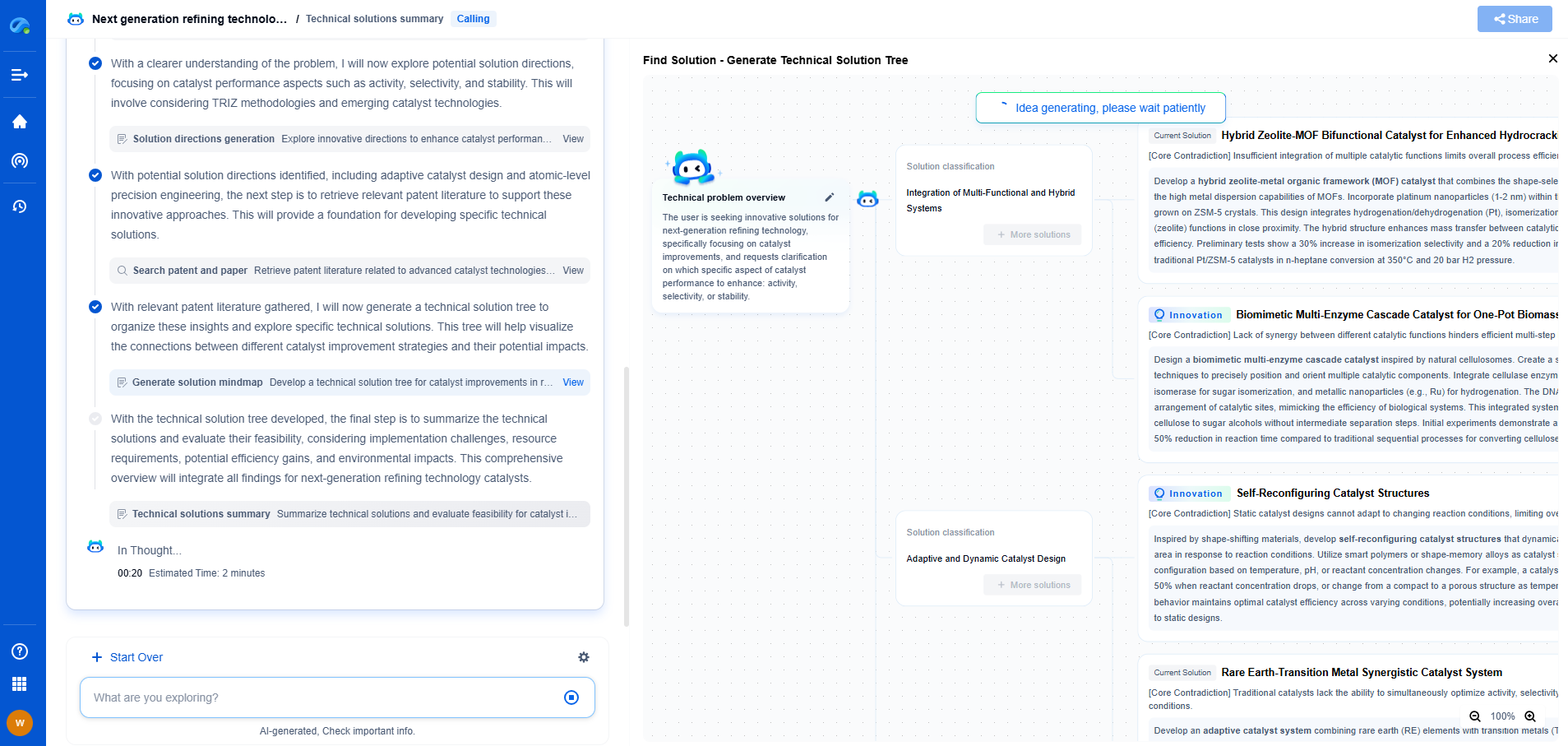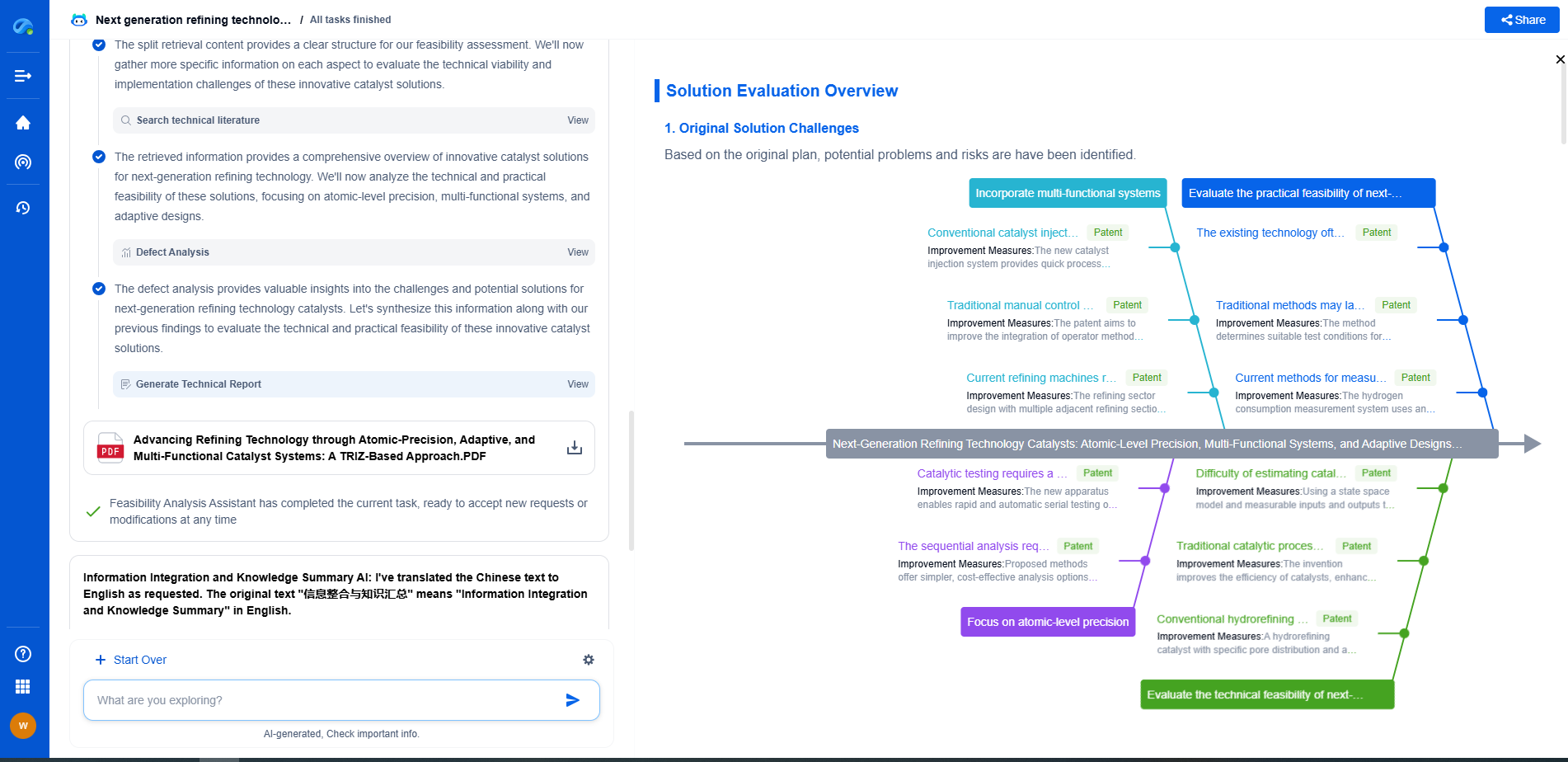How to Use Sensor-Based Torque Feedback for Real-Time Control
JUL 2, 2025 |
The rapid evolution of technology has paved the way for advanced control systems that integrate real-time feedback mechanisms. Among these, sensor-based torque feedback systems stand out for their precision and versatility. Understanding and leveraging this technology can significantly enhance the performance of various applications, from robotics to industrial machinery.
Understanding Torque Feedback
Torque feedback is the process of measuring the rotational force applied to a system and using this data to adjust its operation in real-time. By employing sensors to monitor torque, systems can achieve precise control over mechanical actions, leading to improved efficiency, safety, and longevity of equipment. These sensors are typically employed in motors and actuators to provide data that can be used to regulate performance.
Types of Sensors Used in Torque Feedback
1. Strain Gauge Sensors: These sensors are popular due to their accuracy and reliability. They measure deformation caused by an applied force and convert this into a measurable electrical signal.
2. Magnetostrictive Sensors: Utilizing the property of materials that change shape under magnetic fields, these sensors can detect torque changes without physical contact, offering durability and robustness.
3. Piezoelectric Sensors: Known for their ability to generate an electrical charge in response to mechanical stress, piezoelectric sensors are ideal for capturing rapid torque changes.
Implementing Real-Time Control
The integration of sensor-based torque feedback into control systems involves several key steps:
1. Data Acquisition: Sensors gather real-time data on the torque applied. This information is crucial for making instantaneous adjustments to the system.
2. Signal Processing: Once data is acquired, it needs to be processed to filter out noise and enhance the quality of the signal. This step ensures that the control system receives accurate information.
3. Feedback Loop: The processed data is fed into a feedback loop, where it is compared with the desired torque values. Any discrepancies are corrected by adjusting the system's inputs.
4. Adaptive Control: Advanced systems use adaptive control algorithms that learn from feedback data to optimize system performance continuously. This approach allows the system to adjust to changing conditions and maintain optimal efficiency.
Applications of Sensor-Based Torque Feedback
Sensor-based torque feedback systems are widely used across various industries due to their ability to ensure precision and reliability:
1. Robotics: In robotics, torque feedback allows for precise control of joint movements, enhancing the robot’s ability to perform complex tasks with agility and accuracy.
2. Automotive Industry: These systems are integral in modern vehicles, particularly in steering and transmission systems, to improve handling and fuel efficiency.
3. Manufacturing: In manufacturing, torque feedback is employed in CNC machines and robotic arms to maintain precision and reduce material wastage.
4. Aerospace: Aircraft rely on torque feedback systems for critical operations such as thrust vector control and landing gear deployment.
Challenges and Considerations
While sensor-based torque feedback systems offer numerous benefits, their implementation comes with challenges. Ensuring sensor accuracy, mitigating signal noise, and maintaining system responsiveness are critical considerations. Additionally, the integration of these systems into existing infrastructures can pose technical and financial challenges.
Future Trends
As technology advances, the future of sensor-based torque feedback systems looks promising. Developments in sensor technology, artificial intelligence, and machine learning are set to enhance these systems’ capabilities, making them smarter and more adaptive. The trend towards miniaturization and wireless communication is also expected to increase their application scope.
Conclusion
Sensor-based torque feedback systems represent a pivotal advancement in real-time control technology. By providing accurate and timely data, these systems enable enhanced control, efficiency, and safety across a multitude of applications. As industries continue to innovate, the role of torque feedback systems will undoubtedly expand, offering new opportunities for optimization and growth.
Boost Innovation in Gears & Transmissions with Patsnap Eureka
Whether you're designing a next-gen planetary gearbox or optimizing gear tooth profiles for noise reduction, keeping up with the fast-evolving landscape of mechanical transmissions requires more than just experience—it takes insight, speed, and smart tools.
Patsnap Eureka, our intelligent AI assistant built for R&D professionals in high-tech sectors, empowers you with real-time expert-level analysis, technology roadmap exploration, and strategic mapping of core patents—all within a seamless, user-friendly interface.
Whether you're streamlining a manual transmission system or exploring electromechanical actuation, Patsnap Eureka helps your team move from concept to novelty faster than ever.
👉 Experience Eureka in action—request a personalized demo today and see how AI can revolutionize your gear innovation workflows.
- R&D
- Intellectual Property
- Life Sciences
- Materials
- Tech Scout
- Unparalleled Data Quality
- Higher Quality Content
- 60% Fewer Hallucinations
Browse by: Latest US Patents, China's latest patents, Technical Efficacy Thesaurus, Application Domain, Technology Topic, Popular Technical Reports.
© 2025 PatSnap. All rights reserved.Legal|Privacy policy|Modern Slavery Act Transparency Statement|Sitemap|About US| Contact US: help@patsnap.com

